MarkAudio-SOTA
MarkAudioSota is a speaker company whose products are manufactured in China, (no relation to SOTA turntables) marketing primarily direct to the consumer offering a 30-day return privilege. They do have five dealers set up across the county, however. Even though their upper driver looks like a tweeter, they manufacture only full range drivers. I find this a rather unique driver approach, but they do use a conventional two way design with 2nd order (12db/octave) cross-over networks. Depending on the speaker, they use either 1,700Hz or 2,400Hz cross-over points.
The system consisted of a PS Audio S300 Amp ($1,499) with an AR HiFi AR-M2 Hi-Res music player ($995) with a PS Audio Stellar Gain Cell DAC/Preamp ($1,699). Although I was only able to listen to one pair at that time, they were displaying three pair of speakers: The Viotti One Bookshelf ($2,495/pr), The Cesti B Bookshelf ($1,895/pr) and the Viotti Tower ($7,995/pr).
I listened to their Cresti Tower and found the fit and finish nicely done. Overall sound was smooth with a decent pace. The small full range driver acting a lot like the tweeter, was smooth if not super extended in the high end. Their approach is to maintain as seamless a match between drivers, the top end of which is slightly warm to my ears. Considering most men can’t hear the upper most reaches of treble extension and harmonics, this may be a smart choice in design.
Bricasti Design
Bricasti is one of those cross-over manufacturers possibly better known for their pro sound recording studio equipment. But they also manufacture some very respectable high-end audio equipment. At CAS8, they were using their M21 D/A Classic Edition DAC ($16,000), M12 Platinum Dual Mono Source Controller ($19,000), and M28 monoblock amplifiers. The M28 claimed power output is 200W into 8 ohms or 400W into 4 ohms, with typically less than 0.005% total harmonic distortion at 1kHz at full rated power. Their source was an M5 Network Play,er ($2400) and the speakers were Tidal Audio Piano Diaceras ($40,000).
I listened to Music of Britten by the Cincinnati Symphony Orchestra. Bass showed excellent authority and was dynamic and clean. Castanets were sharp and well defined. Overall dynamics and the presentation was just a lot of fun. The voices in the choral piece were nicely layered and individual voices were easily to position. Often times when choral and organ are combined the organ has the ability to wash out the voices. This is just not the case here.
Zesto
Zesto’s system consisted of Marten Django L speakers consisting of dual SEAS 8” woofers with an Accuton ceramic tweeter ($10,000/pr.). All their electronics were of course tube based. Their source was a Merrill Williams Audio 101.2 turntable ($7,200) with dual Tri-Planar U2 10” Arms ($7,200) and a Benz Mico Gullwing SLR MC cartridge ($3,600). The second arm was set up with an Ortofon Cadenza Mono MC ($1,200). The step up was a Zesto Andros Allasso transformer ($2,995). The phono preamp was their Andros Tessera ($12,000). Preamp was a Zesto Leto 1.5 ($7,500), with a pair of Zesto Eros 300 mono blocks amps ($19,900).
Listening to monaural recording is somewhat unusual at a HiFi show. But Zesto played a 1956 recording of Sonny Rollins which I found very relaxed and musical. Surprising for such an old recording, but it actually held up really well. Needless to say, everything was in the middle between the speakers, and the mono sound did have some depth although no width.
The Zesto 300 monoblocks are 150W KT88 class “A” design. And speaking of design, I think these are some of the prettiest tube amps I have seen. Real audio jewelry that sound great to boot.
Switching back to stereo, the Royal Ballet’s “Swan Lake” restored the three-dimensional sound stage I was missing before. I should also comment on how quiet the system is. The only extraneous noise came from the record surface noise, which I find most acceptable.
PureAudioProject
I remember PureAudioProject from last year’s CAS as they use a rather unique approach to their speaker design. They use an open baffle as well as a modular design. For the CAS8, they showed their Quintet Stellar 10 ($8,990/pr), which includes four Morel 10” woofers with a center module of Morel Dome mid and tweeter. What I also found interesting is the design can be ordered in various different configurations. They also have a Trio design that is much shorter utilizing dual woofers and a center high frequency module. This means they can offer multiple driver configurations based upon the buyer’s preferences and budget.
The speakers were driven with the Exogel Comet DAC/Ion Amp Combo ($6,995) and Shunyata Cables.
I listened to the system and was surprised at how good they sounded in a room with no acoustical treatment at all. The Moral drivers performed well. Imaging was solid and detailed with unusually good low end. For a large speaker system, they performed very much like a small monitor on steroids. I think this is because the mid/tweeter combination is a very small point source.
Time to take a well-deserved break, so I headed back to my room for a snack, and to unload all the information I had been collecting to write this article. Then back to the show.
Continued in Part II
- ← Previous page
- (Page 2 of 2)

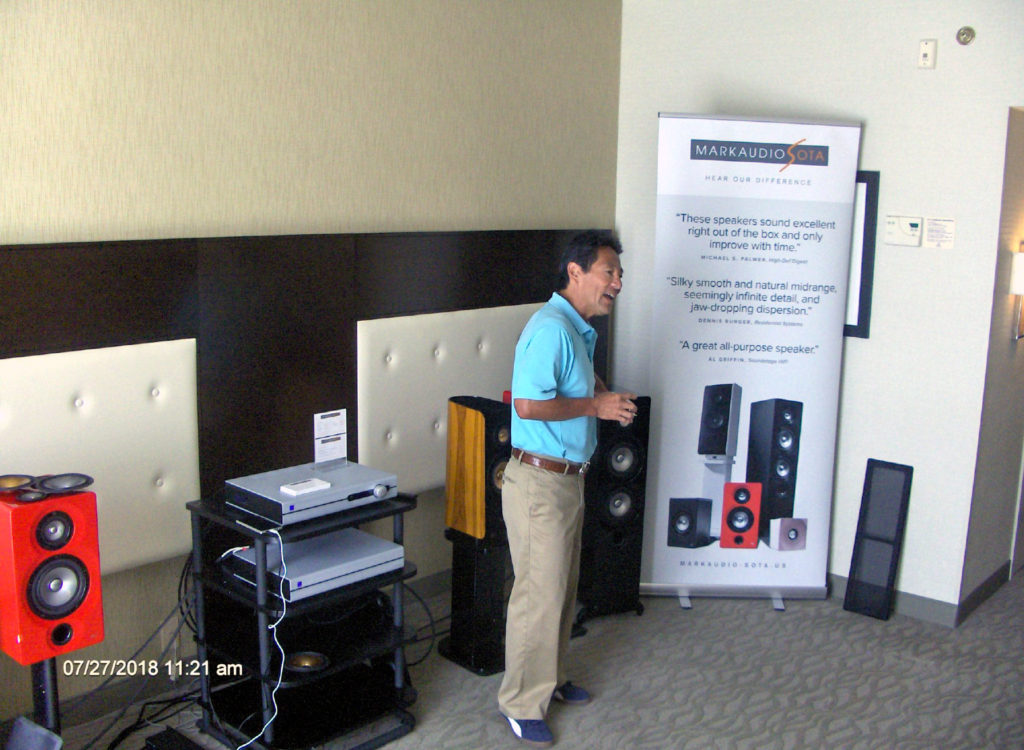
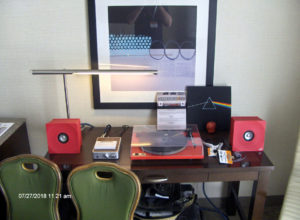
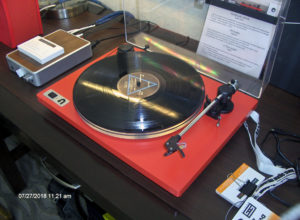
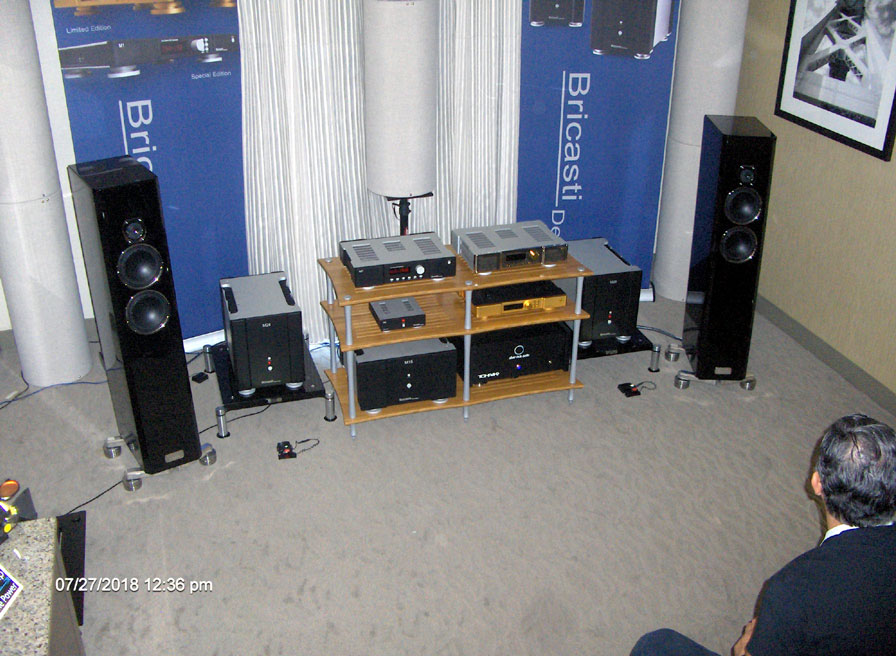
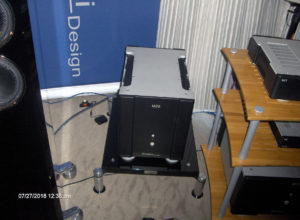
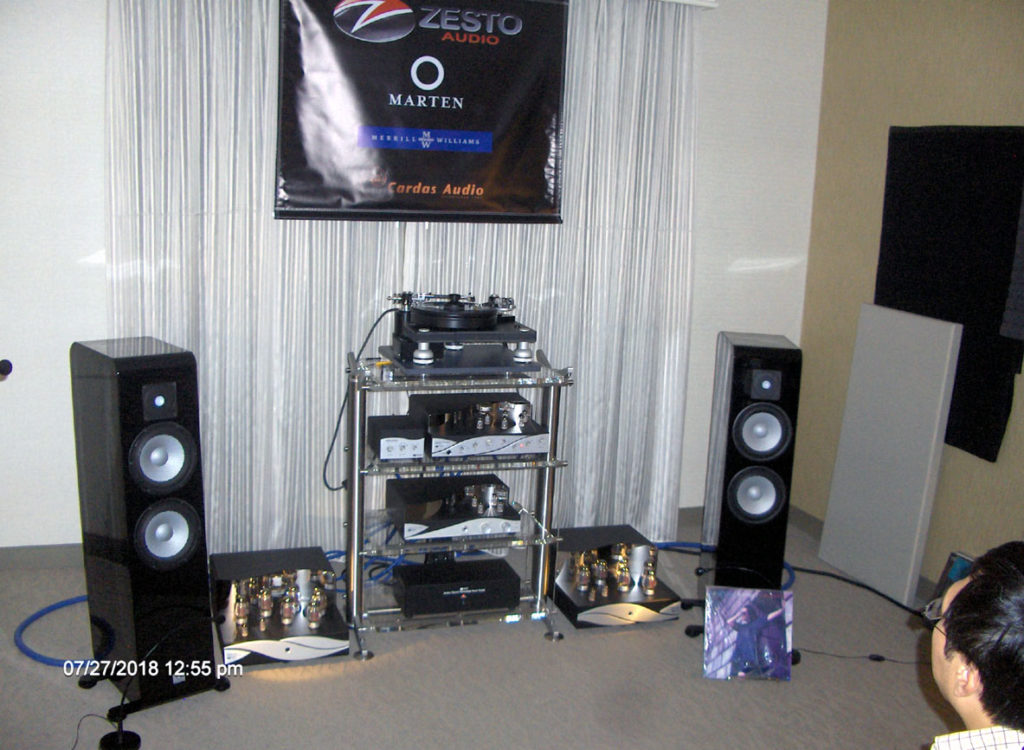
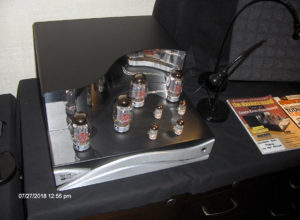

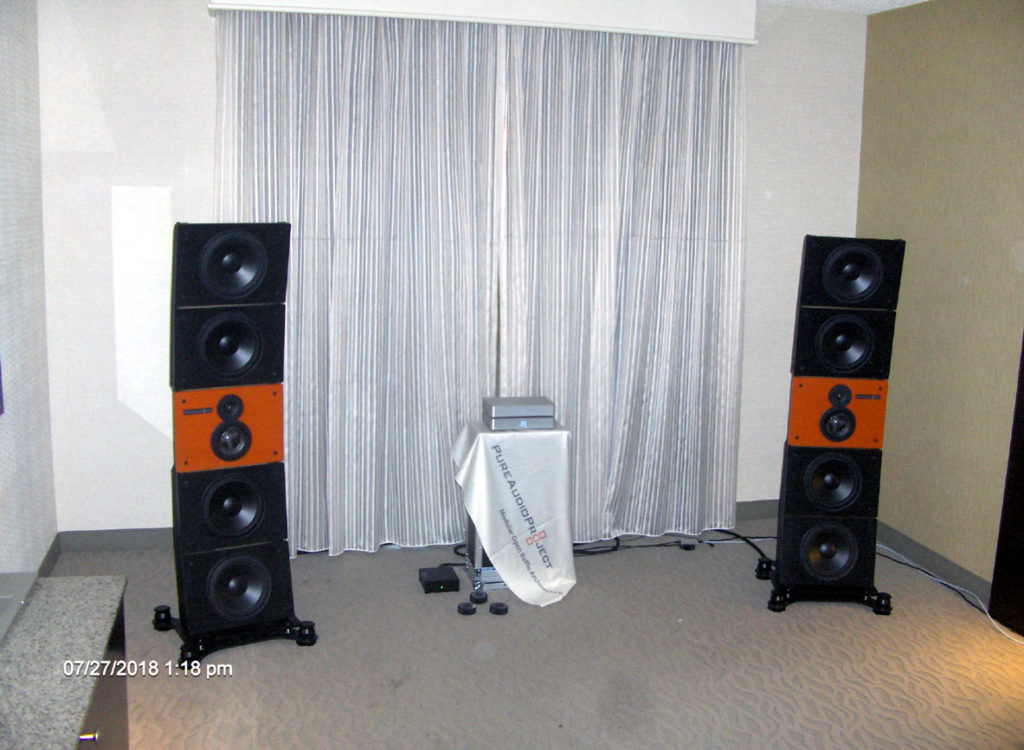
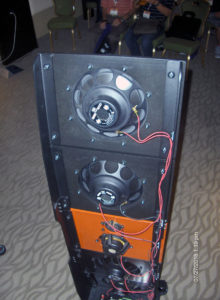
Hi Marc
Firstly, thanks for taking the time to write this show report. It’s always interesting to read other people’s individual views and impressions.
Regarding your comments on the True Sound / Audio Note (UK) room; I’d like to clarify the model names of the products presented during the show, if I may.
We don’t make – and have never made – any ‘speakers with an ‘AT’ designation in the name. The ‘speakers used at the show were AN-E/SPe HE. The ‘HE’ stands for High Efficiency, as this model has the Hemp cone, silver voice coil, large magnet equipped bass drivers. Efficiency is in the region of 97.5dB in room. We don’t actually make any version of the AN-E ‘speaker that is below 94dB efficiency incidentally, and certainly nothing as low as 89dB; never have, never will.
The ARM-Three/II tonearm comes as standard with our AN-Vx external cable installed, this is not an upgrade but the standard version.
The preamplifier was the M3 Phono. The extra ‘ZZ111-64A’ code you’ve included in the name is just an internal / dealer product code, and is not the actual name of the preamplifier. That would indeed be a cumbersome name, even by our standards!
The DAC was actually the DAC2.1x Signature model.
Once again, thanks for taking the time to write the review, and I’m happy to hear you had a pleasant experience.
Regards
Martin
Audio Note (UK)